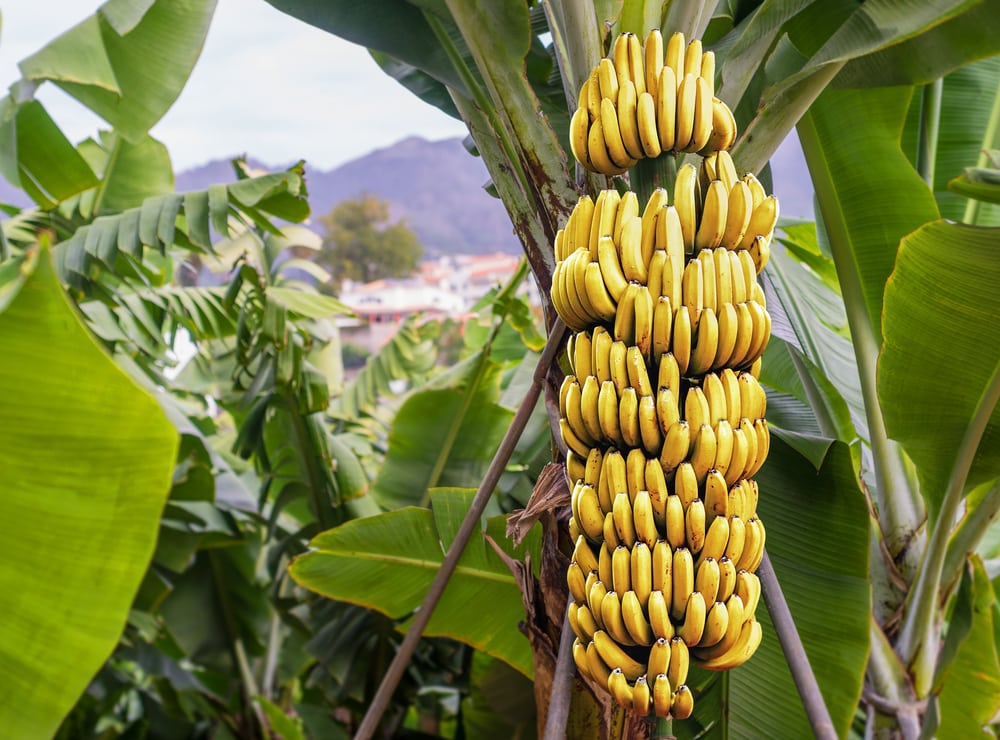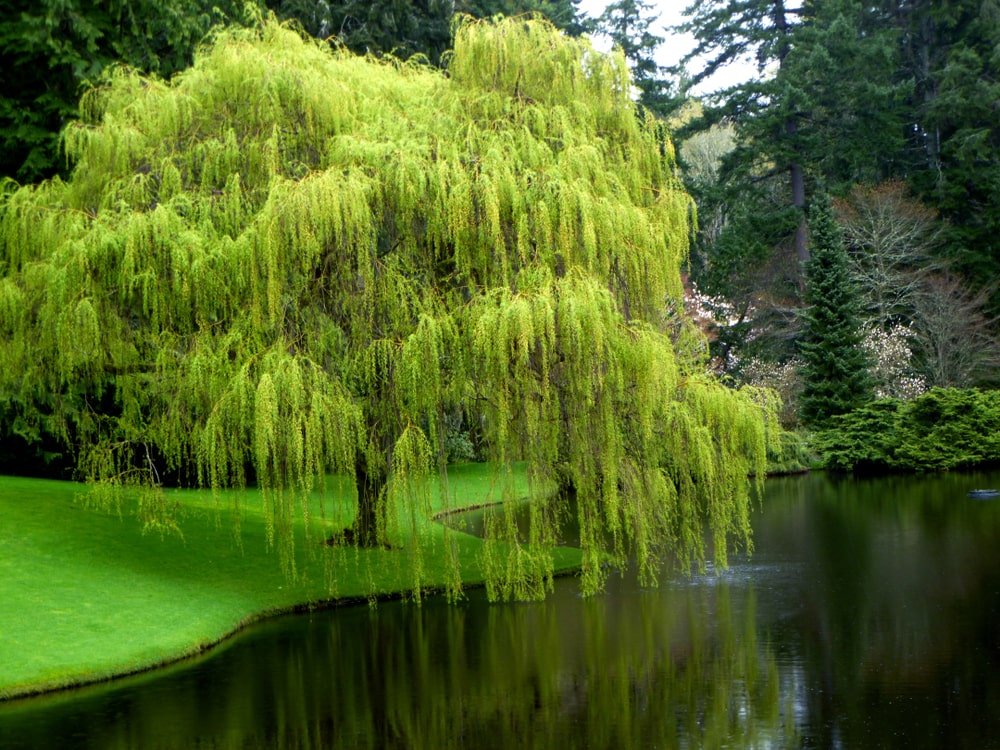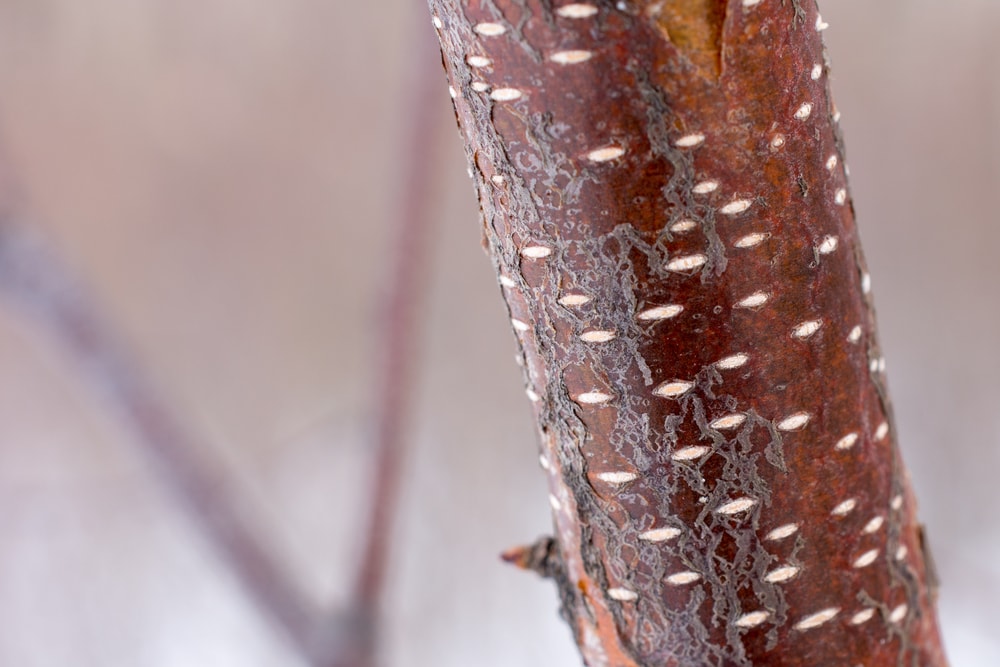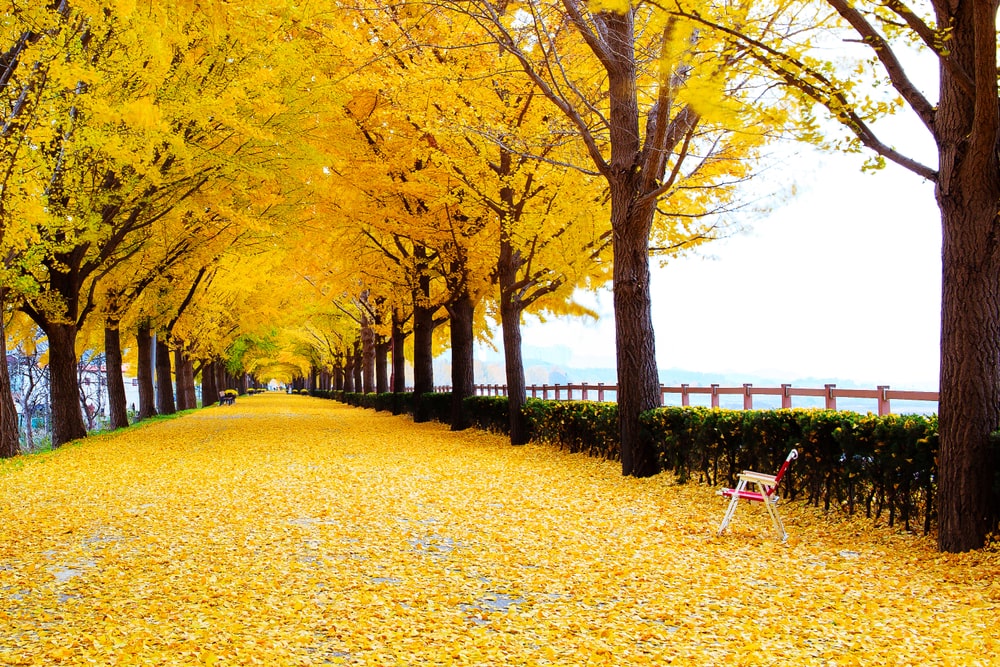Outforia Quicktake: Key Takeaways
- Trees can be distinguished from shrubs and herbaceous plants based on features such as a single trunk, woody tissue, perennial nature, the presence of branches, a defined crown shape, and a vascular system with xylem and phloem.
- Trees can be categorized as evergreen or deciduous based on their leaf behavior. Evergreen trees retain their leaves throughout the year, while deciduous trees shed their leaves during the winter, often changing colors before falling.
- Trees can be identified as angiosperms or gymnosperms based on their reproductive parts. Angiosperms produce flowers that develop into fruits, while gymnosperms, like conifers and cycads, have seeds borne in woody cones.
- Examining the color and texture of tree bark can aid in identifying a tree, as different species exhibit unique patterns, fissures, and textures. Young trees might have different bark characteristics compared to mature ones.
- Different leaf shapes, such as needle-like or scale-like leaves for conifers and simple or compound leaves for angiosperms, can help in tree identification.
Have you ever stood in your garden, in the woods, or in a park and wondered, what kind of tree is this? If the answer is yes, this article is for you.
There is a bewildering array of trees in the world. They are also utterly fascinating once you get to know them.
Identifying trees is part of the complex science of botany. Observing leaf shape, tree shape, the color and texture of the bark, as well as flowers, fruits, or seeds, can help you identify a tree.
With the following tips, you too can be an expert at tree identification.
Identifying a Tree
Some tree-like plants are actually shrubs. Some tree-like plants are actually herbaceous plants, despite their size and tree-like appearance.
The banana plant is a good example of this. So how do you tell whether what you are looking at is a tree, a shrub, or an herb?
Trees

Trees will have these features:
- A single trunk
- Woody tissue
- Perennial (lives for many years)
- Secondary limbs further up the trunk, called branches
- A defined crown shape
- Vascular (have xylem and phloem to transport water and food around them)
Shrubs

Shrubs have these features:
- Many stems or trunks, none of which are dominant
- Less than 3m (10 ft) tall
- Often bush-shaped
- Vascular
The bushes in the landscaping are shrubs with many woody stems. Barberry is a shrub.
Herbaceous Plants

Herbaceous plants have these features:
- Soft, non-woody tissues
- May die back to roots at certain periods in the year
- Vascular
Most of the time, it will be obvious which category the plant you are looking at falls into. There are some plants, however, that are classified as an intermediate stage between trees and shrubs.
A banana plant—not a true tree, despite its size. The stem is made of soft, herbaceous tissue and is not woody. It is an herbaceous plant.
Evergreen vs Deciduous

The next step is to work out whether the tree is evergreen or deciduous. If it is winter in a cold climate and the tree has leaves, it is evergreen.
Evergreen trees do not lose their leaves in the winter. They remain green all year. Many conifers are evergreen. Not all evergreen trees are conifers, though they are the most dominant group of evergreens.
Holm Oaks are evergreen, but they are also broadleaf trees, not conifers. Most conifers are evergreen, but there are exceptions, such as Larch.

Deciduous trees drop their leaves in winter. The leaves often lose their green color before they fall, becoming yellow, orange, or red. This is due to the loss of chlorophyll that was in the leaves when they were green.
A maple is a deciduous tree. Japanese Maple leaves turn a beautiful red in the fall (Autumn).
Angiosperm vs Gymnosperm
Take a look at the tree’s reproductive parts. These will be, in most cases, either fruits or cones. Even if it is the wrong time of year for the fruits, there may be immature cones. Plus young fruit or flowers to make identification easier.
Angiosperms

Angiosperm trees produce fruits. Angiosperms comprise 80% of all plants on Earth. They include flowering plants, not just trees. They have flowers that turn into fruits. The fruits develop as a fertilized egg (ovule) inside a hollow ovary.
An apple tree is an obvious example of an angiosperm, with flowers that develop into delicious fruits. Nut trees are also angiosperms; it’s just that their fruits have hard cases. Seed-bearing trees like sycamores are also angiosperms.
Gymnosperms

Gymnosperm trees are an ancient family of trees. They reproduce without the seed being enclosed in an ovary. This is why their name means ‘naked seed’. The seeds are borne in woody cones instead.
They don’t have flowers. Instead, there are male pollen cones and female pollen cones.
Gymnosperms include conifers, cycads, and ginkgo trees. Conifers are the most common group worldwide, but this does depend on where you live.
Identifying a Tree by Leaf Shape
There are many, many different shapes of leaves. While this is a good general way to identify a tree, always use other features to identify a tree too. Especially if you’re going to eat from it.
Are the leaves shaped like needles or scales?

Needle or scale-shaped leaves belong to CONIFER trees. To find out what kind of conifer it is, move on to:
- How long the needles are
- How they are arranged (whorls, bunches, clusters, etc)
- How many needles are in each fascicle (the papery sheath they grow out of)
- What the needle looks like on the underside
Are the leaves simple or compound?

Simple leaves are a single, whole leaf attached to one stalk. Beech is a good example of a simple leaf. Simple leaves can be deeply lobed or toothed. As long as they are recognizable as one leaf, they are simple leaves.
Compound leaves have several leaflets attached to a stalk. Elder and Ash have compound leaves.
Are the leaves palmate, toothed, scalloped, or lobed?

Palmate leaves look like palms or hands. Horse chestnuts have palmate leaves. Palmate leaves are compound. They radiate out from a single point on the stalk instead of along the stalk.
Toothed leaves have serrated edges. Different species will have different sizes of serrations. Some are irregular or ragged, with some of the “teeth” bigger than others.
Others will have fine, regular teeth. Sweet chestnuts have toothed leaves.
Scalloped leaves have wavy edges that are soft, not toothed. Rauli trees from Chile have wavy-edged leaves.
Lobed leaves have deeply cut borders but are still recognizably one whole, simple leaf. Pin Oak and Hawthorn have lobed leaves.
Leaf Shapes

Some common leaf shapes include:
- Heart-shaped (cordate)
- Oval
- Narrow
- Rounded
- Triangular
How To Identify A Tree By Tree Shape

We know a tree has a trunk and a crown. That still leaves a lot of scope for different tree shapes. An obvious example is a Fir tree.
Fir trees have a pyramidal shape. Shape is also a good way of recognizing trees in winter, when you can’t use their leaves, flowers, or fruit to identify them.
Here are some other trees you can recognize by their shapes:
- Spreading: Pedunculate Oak, Cedar of Lebanon
- Round: Cherry
- Oval: Horse Chestnut
- Conical – Leyland Cypress
- Vase: Golden Rain tree (Koelreuteria paniculata)
- Open: Silver Birch
- Weeping: Weeping Willow
- Irregular: Buckeye (Aesculus flava), Hickory (Carya sps)
- Columnar: Lombardy Poplar (Populus nigra)
Some trees are managed by coppicing or pollarding, which can drastically change their shape.
Coppicing is when a tree is cut right down to the ground. It regrows with many trunks—a bit like a shrub. Hazel is a well-known coppiced tree.
Pollarding is when a tree is cut through further up the trunk. It creates a spray of branches higher up. Willows are often pollarded.
How To Identify A Tree by Bark Color and Texture

When leaves are scarce, another good way to identify a tree is by looking at and feeling the bark on its trunk. It is important to note both the color and texture—how the bark looks and feels.
How To Observe and Record Tree Bark
Here are some points to consider:
- Color: is the bark gray, brown, white, or orange?
- Texture: are there knots, twists, nodules, scales, or patches? London Plane has patches that flake off, giving it a distinctive mottled appearance. The black locust (Pseudoacacia) has knobbly lumps on its bark.
- Fissures: these are the “grooves” in the bark. Some trees have deep fissures. Some have twists in the fissures, like Sweet Chestnut.
- Lichens and algae: these tiny plants grow on trees in non-polluted areas. Ash harbors a lichen that can drastically change its color, for example.
- Sun or shade: it’s better to look at the shady side of a tree to assess its color. This is because of the plant life that grows on the sunny side. Try to find a part of the bark that hasn’t got lichen, algae, or moss on it.
- Pollution: air pollution can affect the color of tree bark. White moths have been known to evolve into black or gray forms to blend in with polluted tree bark.

The beautiful mottled bark of the London Plane tree (Platanus x hispanica) enables it to resist pollution in inner-city areas. Due to this, it is planted extensively in urban areas.
Bark Textures

American hornbeam 
birch 
redwood tree 
stone pine
The way a tree grows and expands affects the texture of its bark.
Some trees expand and grow by adding just a thin layer of new cork (outer bark). These trees produce smooth bark. The old layer of cork dissolves into dust. These trees include Hornbeam and Beech.
On some of these trees that produce a thin layer of cork, the old bark peels off like paper.
However, other trees have a thicker new layer of cork. This pushes the old layer outward as it grows and causes cracking. This creates the fissures that we see in oak, sweet chestnut, beech, cork oak, and redwood. the image above is a spongy bark of a redwood tree.
A thick cork layer can also create plates. You can see these on yew, sycamore, spruce, stone pine, and sycamore trees. Plates on these trees have different sizes and shapes. Take a look at the close-up of the bark plates on a stone pine image above.
Young Tree Bark vs Older Tree Bark

Be aware that young trees can have very different bark from older trees. A good field guide to trees will show you the bark of a young tree as well as an older tree of the same species.
Young silver birches have horizontal striations on shiny, smooth, orange-red bark.
Old silver birches have craggy white bark with dark diamond patches. They are still the same tree.
How To Do A Bark Rubbing
Bark rubbings are a useful and fun way to record the texture of bark. All you need are some thick wax crayons and some thin, pale-colored paper. Use the side of the crayon to rub over the paper when it is held against the tree.
You might want to use string to fasten the paper around the trunk at the top and bottom. You can keep the sheets as a reference. They will help identify the trees later, when you get home.
Identifying Trees By Twigs and Buds

In the winter months, there are no fruits, leaves, or flowers (unless you’re looking at an evergreen). Instead, you can use the size, look, and arrangement of buds on a twig to identify a tree.
Twig features
Note down these features of the twig:
- Size of the buds: measure them with a ruler
- Color of the buds: check if they have any patterns too
- Texture of the buds: velvety or shiny, sticky or scaly? Horse Chestnut buds are sticky. Ash buds are velvety. Oak buds are scaly.
- Overall color
- Texture of the twig: is it downy, hairy, or spiny? Down is very fine, soft hair.
- Arrangement of the buds: are they opposite each other? Or are they alternating?
Opposite or alternate buds
The wayfaring tree (Viburnum lantana) and the Guelder Rose (Viburnum opulus) have opposite buds. This means the buds are directly opposite each other on either side of the twig.
This lilac twig has opposite buds.

Hornbeam, oak, beech, and aspen have alternate buds. They are spaced out along the twig, so there is only one bud at each position along the twig.
This white willow also has alternate buds.

Identifying Trees By Seeds and Fruit
Reproductive parts of trees can tell you a lot about the identity of their parents.
Cones from Gymnosperms

If you see hard, woody cones, you are looking at a gymnosperm, which is likely to be a conifer or a cycad if you are near the tropics.
Ginkgos are also gymnosperms, which is confusing as they have reproductive parts that look like flowers and fruit.
You can measure the cone’s length and weight and observe its appearance to identify which species of conifer or cycad it comes from.
Alder and eucalyptus trees have cone-like fruits, but these are not true cones. Confusing? You bet. The seeds above are from eucalyptus.
Fruits from Angiosperms
Fruits from trees can take many forms. Winged seeds are still fruits, as are nuts. Just because they have a hard case does not mean they are unfit. It’s the enclosed ovule (egg) inside the ovary that makes the fruit what it is.
Here we will demystify the technical language surrounding botanical names for fruits. Now you will understand what your field guide is telling you.
Winged seeds

Ash trees have winged seeds, as do Maple And Sycamore. Field Maple has paired winged seeds, while sycamore has only one seed that whirls around like a helicopter. Silver birch seeds have a papery wing case that surrounds them like a halo.
These maple seeds will go dry and brown when ripe and ready to fall.
Berries

A berry is a fruit with more than two seeds in it. Often, a berry has many seeds, like a banana. That’s right—a banana is a berry. If you open a banana, it contains many small seeds.
A berry also comes from only one ovary within one flower. Hawthorn fruits are berries. Blackberries are not actually true berries; they are aggregates of achenes, which are hard seeds.
Drupes

Many of our most recognizable fruit trees have fruits called drupes. These are fruits with only one seed inside. They also form from one ovary within a single flower.
Some good examples of drupes are plums, coconuts, mangoes, walnuts, and olive fruits.
Clustered or multiple fruits

Clustered or multiple fruits are formed from multiple flowers. At first, each fruit forms separately as a drupe, but then they merge into one fruit. They include pineapples, figs, and breadfruit.
Magnolia, tuliptree, and sweet gum have dry multiple fruits.
Nuts and nut-like fruits

Nuts still have the same physical characteristics as fruits, with an internal ovary containing a seed. Hickory, chestnut, beech nuts, and acorns all fall into this category. As do many others.
You may also like: Ancient Trees: Unveiling The Mysteries Of The Living Relics Of Our Natural History
Identifying Trees By Smell

It’s a good idea to use all your senses when out in the field (or woods). Here are some common tree scents you may encounter:
- Pine trees often have a strong turpentine, citrus, or disinfectant smell. This is due to the powerful antimicrobial resin inside them. You can spot this leaking from small wounds in the tree. If you crush a few of the needles or scale-like leaves, you will be able to smell them.
- Atlas Cedar cones have a musky, spicy, incense-like scent. They smell like perfume.
- Lemon Eucalyptus (Corymbia citriodora) has essential oils that make it smell like lemon when you crush the leaves. Lemon-scented ironbark (Eucalyptus staigeriana) is another tree that smells of citrus. Both of these trees are found in Australia.
- Common Juniper (Juniperus communis) berries smell like gin. This is unsurprising once you know that it is this tree that is used to make the famous alcoholic drink. Crush the berries to release the sweet floral scent.
Kit List For Identifying Trees

It’s useful to have these items when you find a tree that you want to identify. Try to avoid breaking off bits of the tree, especially if it is in a park or botanical garden.
If I find a tree in the wild and I want to identify it at home, I sometimes clip off a small twig with a clean knife.
If you do this, make the cut slanting diagonally and facing the ground. This way, microorganisms and dirt are less likely to get into the tree.
You may need:
- Camera (or smartphone)
- Notepad
- Sketching with a pencil or pen
- Hand lens (for viewing small features of buds, cones or flowers)
- Ruler or measuring tape (some different species vary in cone or bud size, for example).
You may also like: The Science Of Tree Care And Maintenance: What Is An Arborist?
Paleoethnobotany: The Study of Which Trees and Plants Our Ancestors Used

A paleoethnobotanist can tell which tree or plant they are looking at from just a tiny piece of charcoal. Charcoal is found in the remains of prehistoric dwellings. This charcoal can be thousands of years old.
Paleoethnobotany is the study of what plants our distant ancestors used and how they used them.
They can do this by looking at a section of the charcoal through a microscope. Every tree species has a distinctive cell structure and arrangement.
A bit like a fingerprint. On a basic level, hardwood trees have a very different structure from softwood trees.
You need a good microscope to be able to see these microscopic differences.
FAQs

How do I find out what kind of tree I have?
Use keys for identification such as leaf shape, tree shape, color, and texture of bark.
Observe whether the tree is evergreen or deciduous. Does it have hard cones or soft fruits? Buying a good field guide is essential. Some apps are also good for helping to identify trees.
Are trees considered botanical?
The meaning of botanical is “anything related to plants or the study of plants”. The word “botanical” has expanded to include plants that are present in a drink such as gin. So trees are definitely classified as botanical.
Do trees make flowers?
Angiosperm trees make flowers. Angiosperm plants comprise 80% of all known plant species on Earth. If the tree is an angiosperm, it will produce flowers that turn into fruits, nuts, or seeds.
They grow from an egg enclosed in an ovary. Gymnosperm trees don’t make flowers. They produce male and female cones instead.
Does Ginkgo Biloba have flowers and fruits even though it is a Gymnosperm?
Ginkgo is an ancient tree that is classified as a Gymnosperm—a “naked seed” tree. This is because, despite having flower-like structures, botanists do not consider them to be true flowers.
The male flowers are more like cones. The seed has a fleshy covering but is not regarded as a true fruit.
What are three characteristics you can use to identify a tree?
You can identify a tree by a combination of tree shape, leaf shape, and bark appearance. There are other features to consider too, such as scent and the size and arrangement of buds on a twig from the tree.








